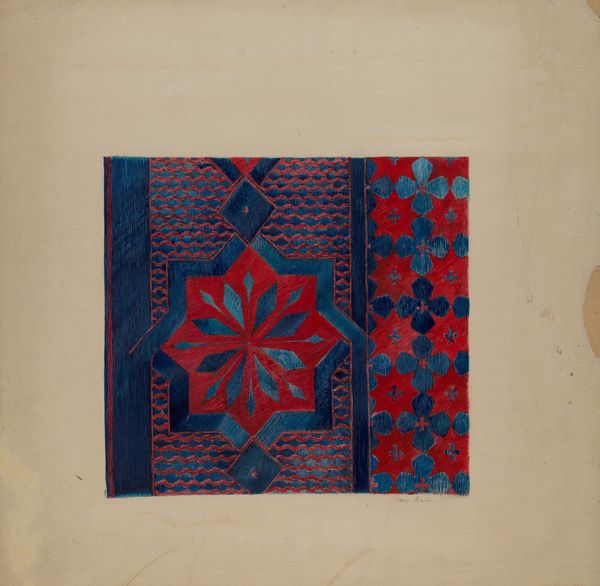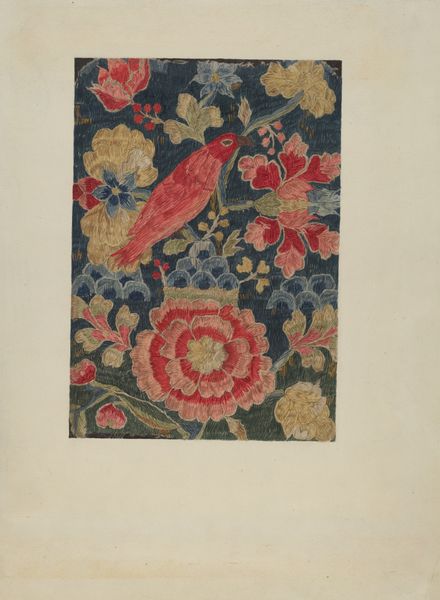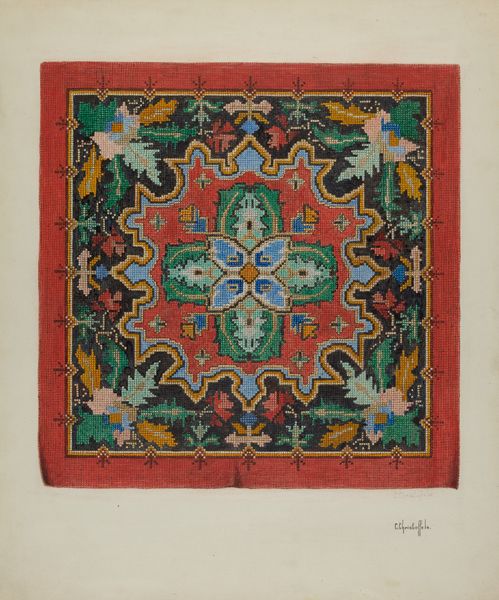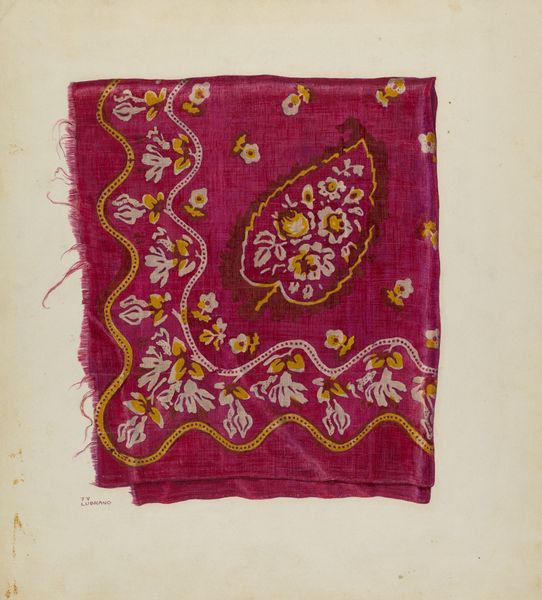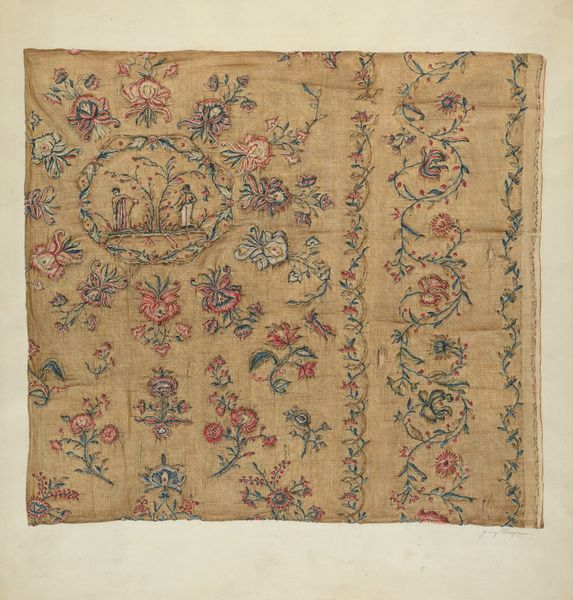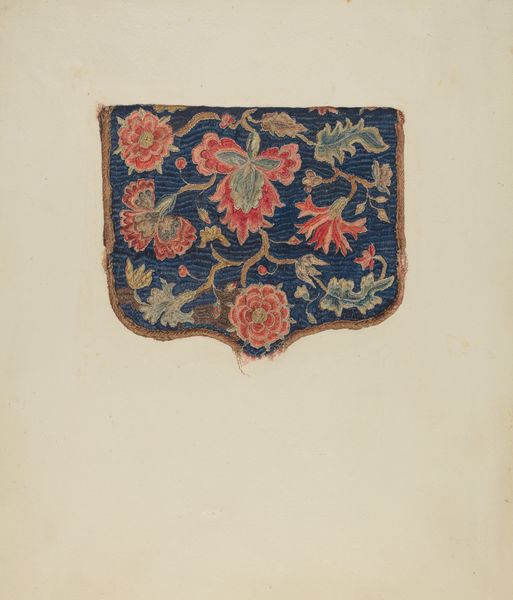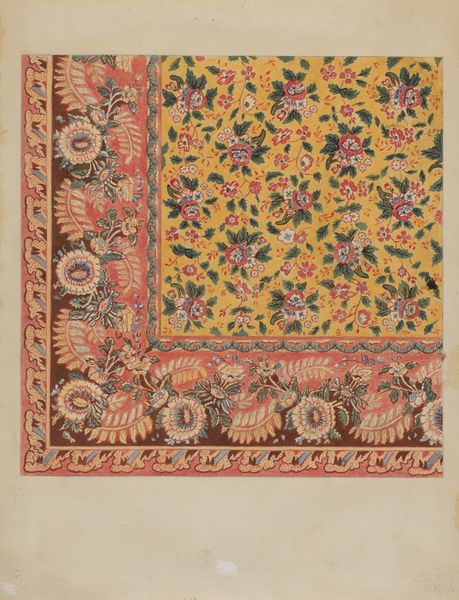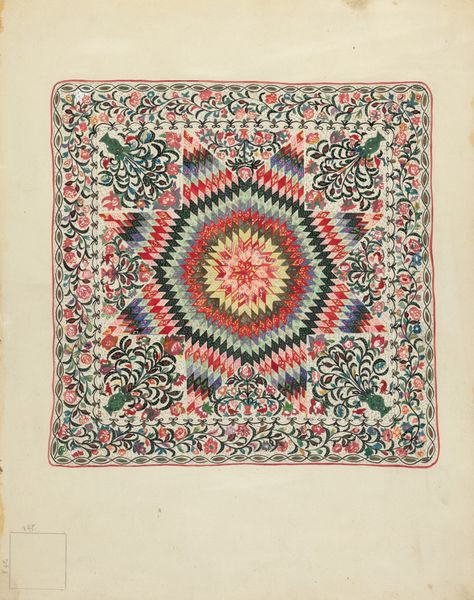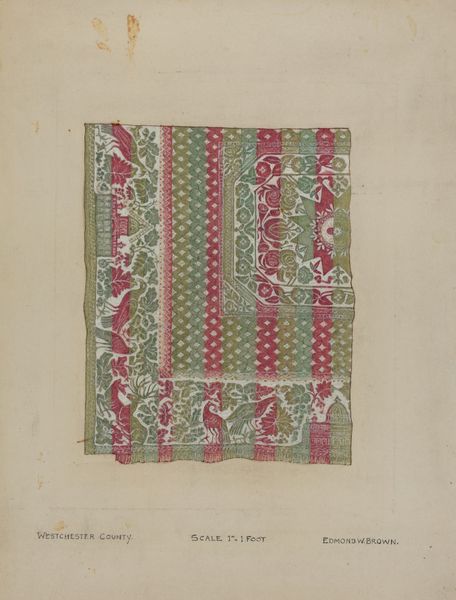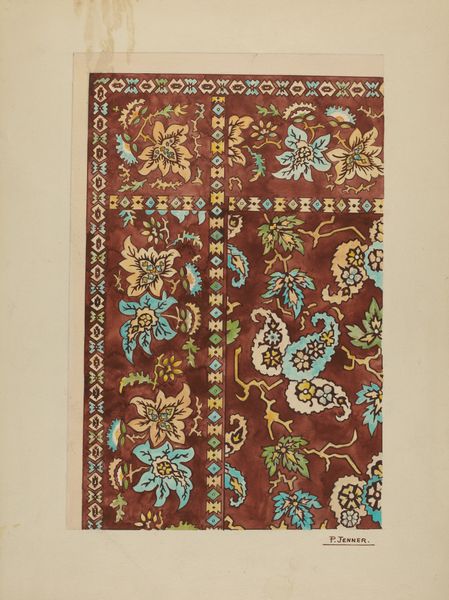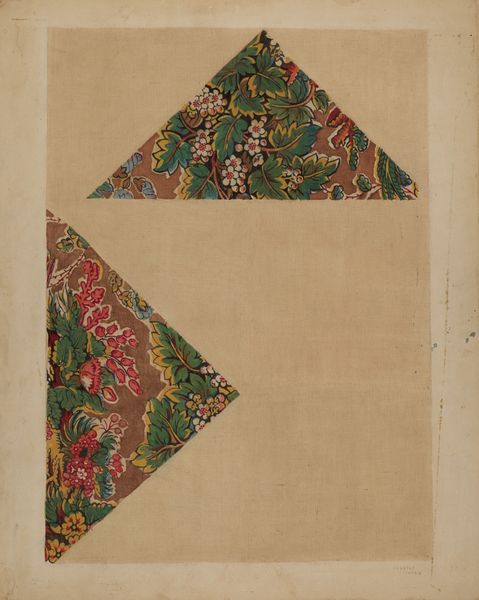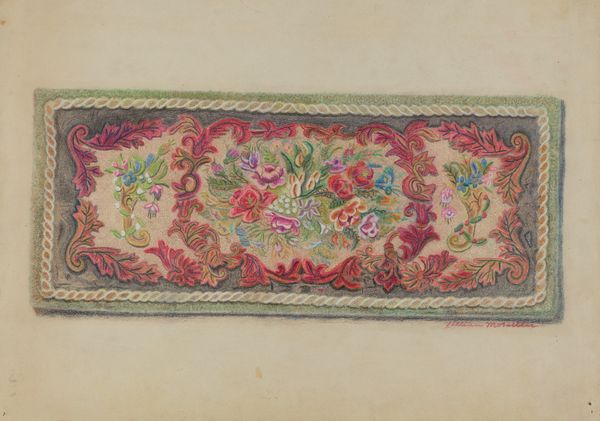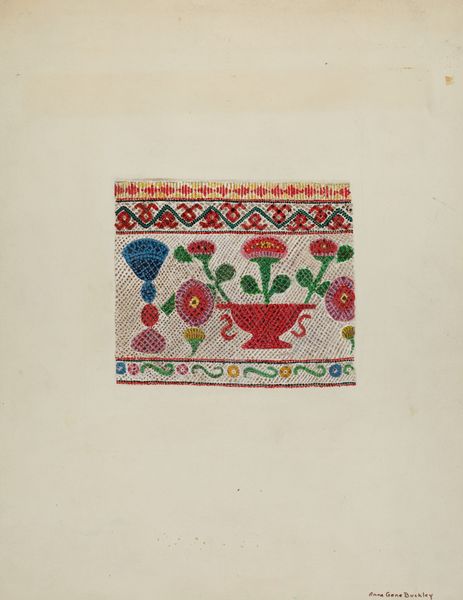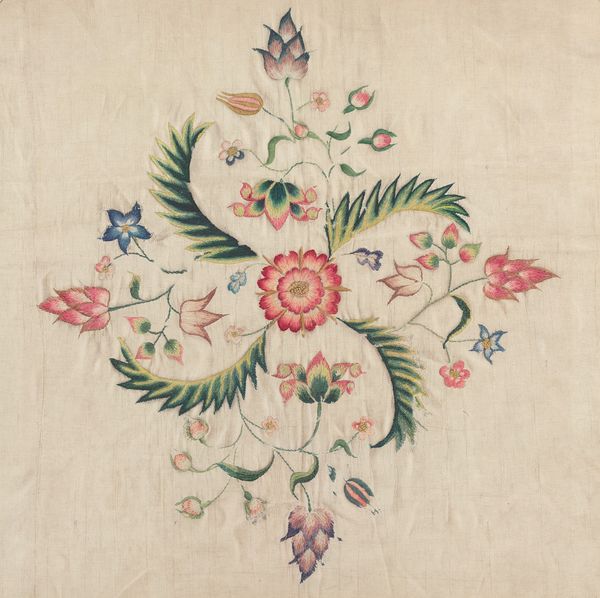
drawing, painting, textile, paper, watercolor
#
drawing
#
water colours
#
painting
#
textile
#
paper
#
watercolor
#
coloured pencil
Dimensions: overall: 36 x 33.1 cm (14 3/16 x 13 1/16 in.)
Copyright: National Gallery of Art: CC0 1.0
Curator: The object before us is "Economy Red Handkerchief" by Ralph Atkinson, completed around 1938. It seems to be a textile design rendered in watercolor and colored pencil on paper. My initial impression is of organized vibrancy—the repeating floral motifs create a structured, almost geometric visual harmony against that red background. Editor: A handkerchief, especially during the Depression Era, speaks volumes about accessibility and daily life. We see the material culture reflecting the economic pressures—even something meant for personal hygiene or decoration is laden with implied choices about labor and consumption. Red dyes were also historically significant in trade and textile production... it opens a conversation about class and aesthetics. Curator: I’m drawn to how the bright watercolor blooms contrast so effectively with the severity we might expect from that era. The meticulous detail with which the floral elements are rendered indicates artistic precision, but beyond this skill, there’s also something deliberately optimistic at play with those saturated jewel tones of blues, greens and yellows. Editor: I wonder about the textile printing processes involved in rendering these floral patterns for wider consumption. We're observing an interpretation – a painted design of something that will be further mass-produced. Were there unique color application techniques at this time or design conventions associated with affordable textiles that shaped the look of pieces such as this? It certainly suggests something about access to color and pattern among everyday consumers. Curator: Possibly! Thinking about its purpose as a potential design prototype shifts my perspective. Those minute colour variations and gradients seem like they might be lost in translation on a printed fabric but are highlighted within this piece. They almost feel like small acts of rebellion against standardization! The piece pushes back against functionality as merely a utility. Editor: Precisely. What at first might seem decorative reveals the relationship between designer, producer, and consumer, with textiles occupying that critical interface. Atkinson's choice to create something aesthetically compelling speaks volumes about bringing artistry to the masses at a time when it was maybe needed most. Curator: I will now be leaving here having gained a richer understanding of textile art through the lens of material accessibility and creative expression. Thank you for highlighting that crucial connection! Editor: Thank you; these kinds of historical artifacts allow us a greater appreciation for artistry’s function in ordinary experience during trying eras.
Comments
No comments
Be the first to comment and join the conversation on the ultimate creative platform.
